Ask Klue
Designing an AI-powered conversational assistant to make competitive intelligence instantly accessible for
every team.
Ask Klue began as an AI-driven chat assistant that allowed users to ask questions about competitors, products, and market trends, surfacing insights from across Klue’s intelligence platform. Over time, it evolved into an app-wide AI assistant, a contextual layer that now supports workflows across the entire platform, guiding users wherever they work.
ML & Insights Team
Why.
Context
Before Ask Klue, teams struggled to get timely answers to competitive questions.
The chat assistant was meant to help users find relevant information on the fly.
Initial release engagement was low despite strong initial interest: many queries returned 0 results (since the tool could only pull from content a company had already uploaded into Klue), and users often got confused between Ask Klue and the regular search bar, unsure what kinds of questions to ask. Nearly 28% of queries were just a single company name, showing that users defaulted to shallow prompts rather than digging deeper. These gaps limited adoption and prevented Ask Klue from becoming the trusted go-to for competitive intelligence.

What.
Through iterative design and close collaboration with users, PMs, and ML engineers, I led discovery and iteration to turn Ask Klue from a “nice-to-try” feature into a trusted chat assistant.

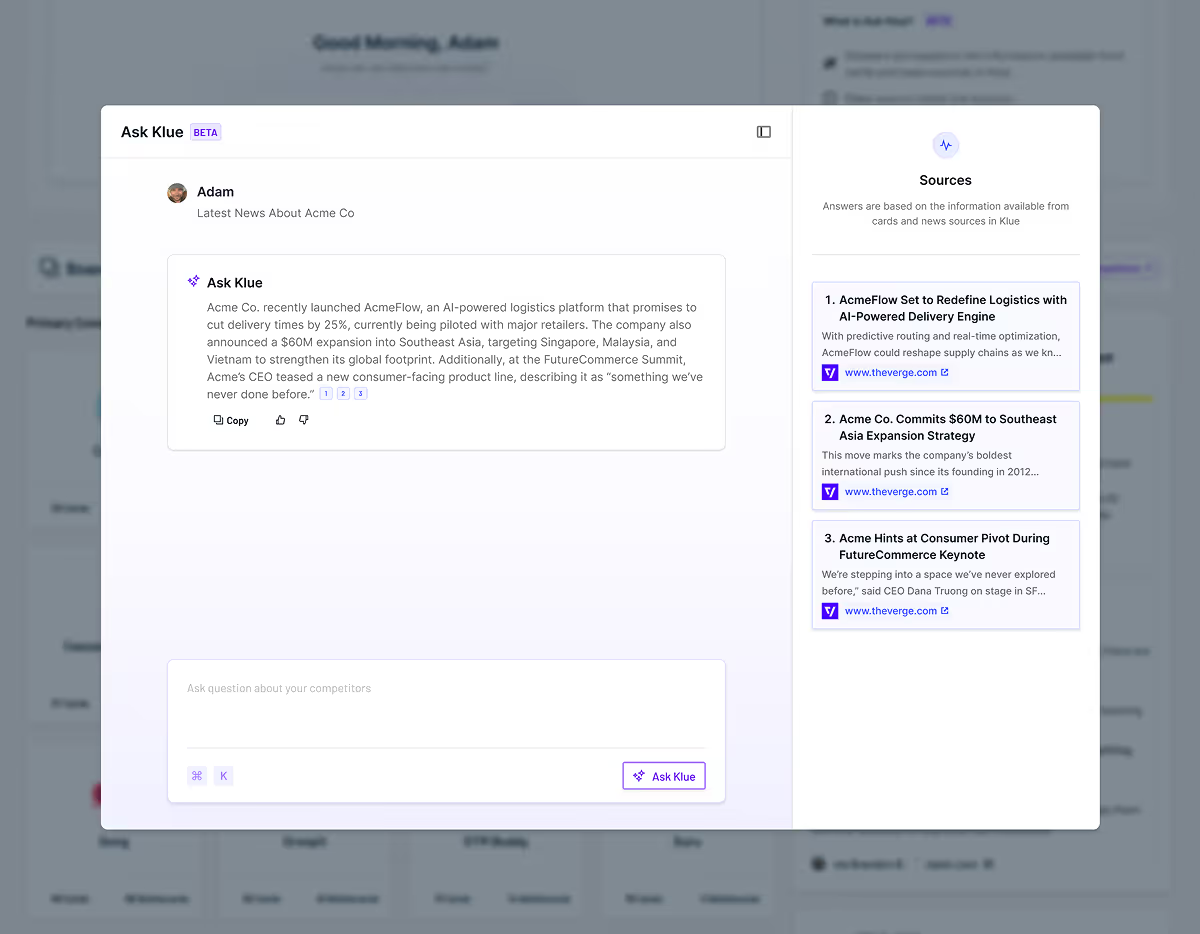
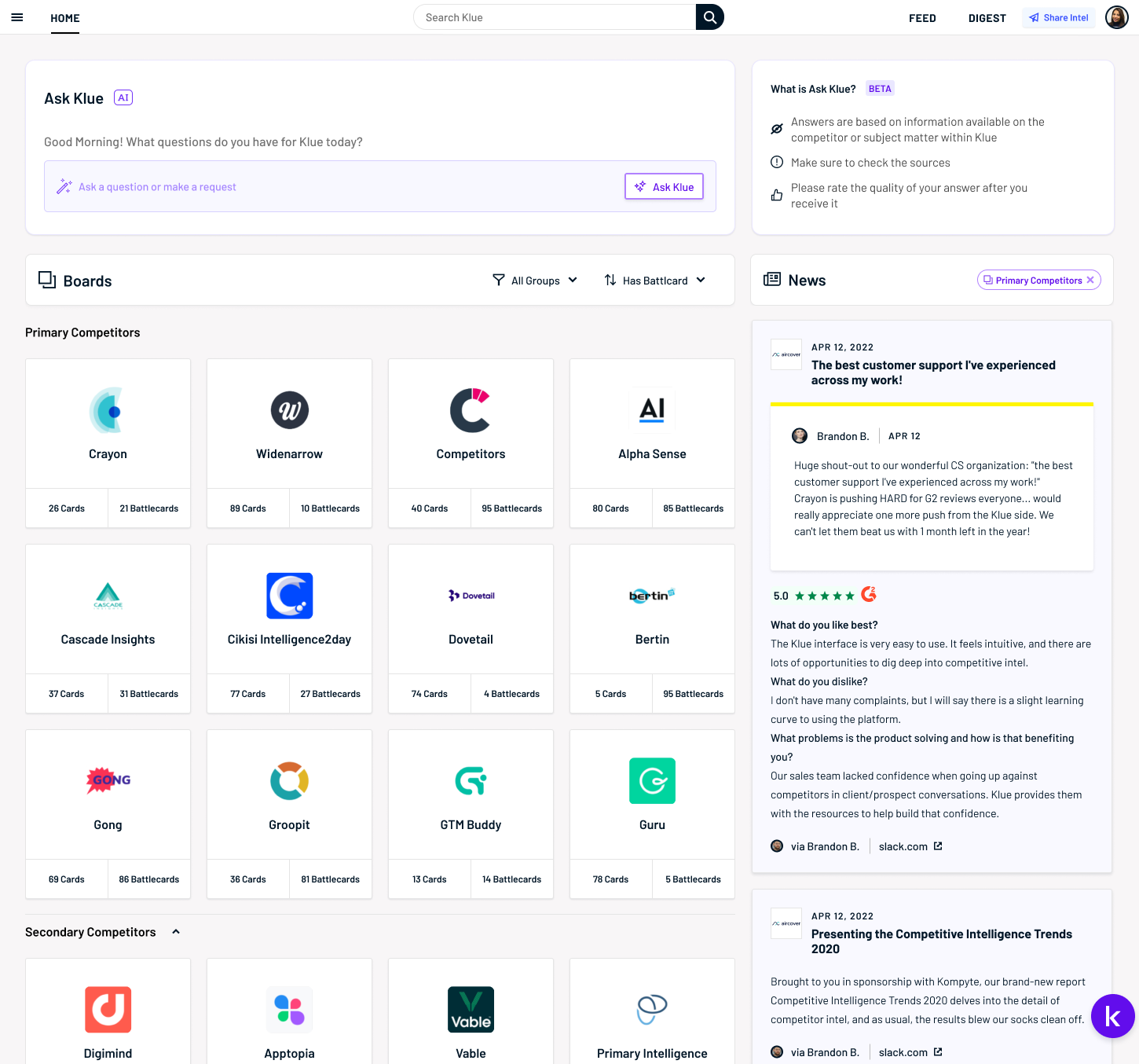
.png)
Guidance & clarity
To address confusion with the regular search bar, I designed clearer entry point and prompt suggestions, showing users the kinds of questions they could ask
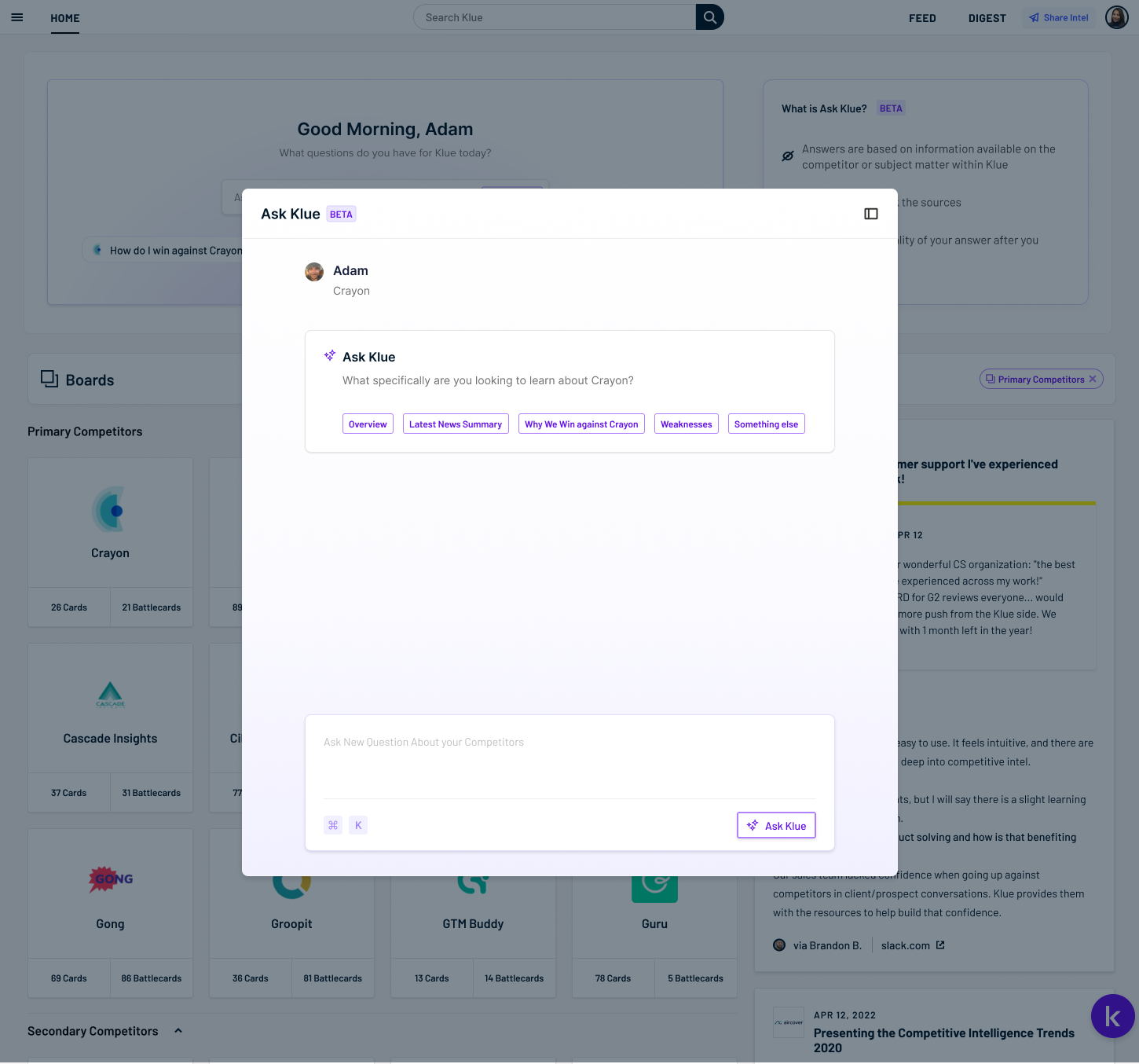
Follow-ups & depth
To move beyond shallow, one-off queries, I introduced conversational follow-ups. Additionally users could clarify, refine, or pivot their questions , turning a single “company name” into a deeper exploration of competitors, products, and market trends.
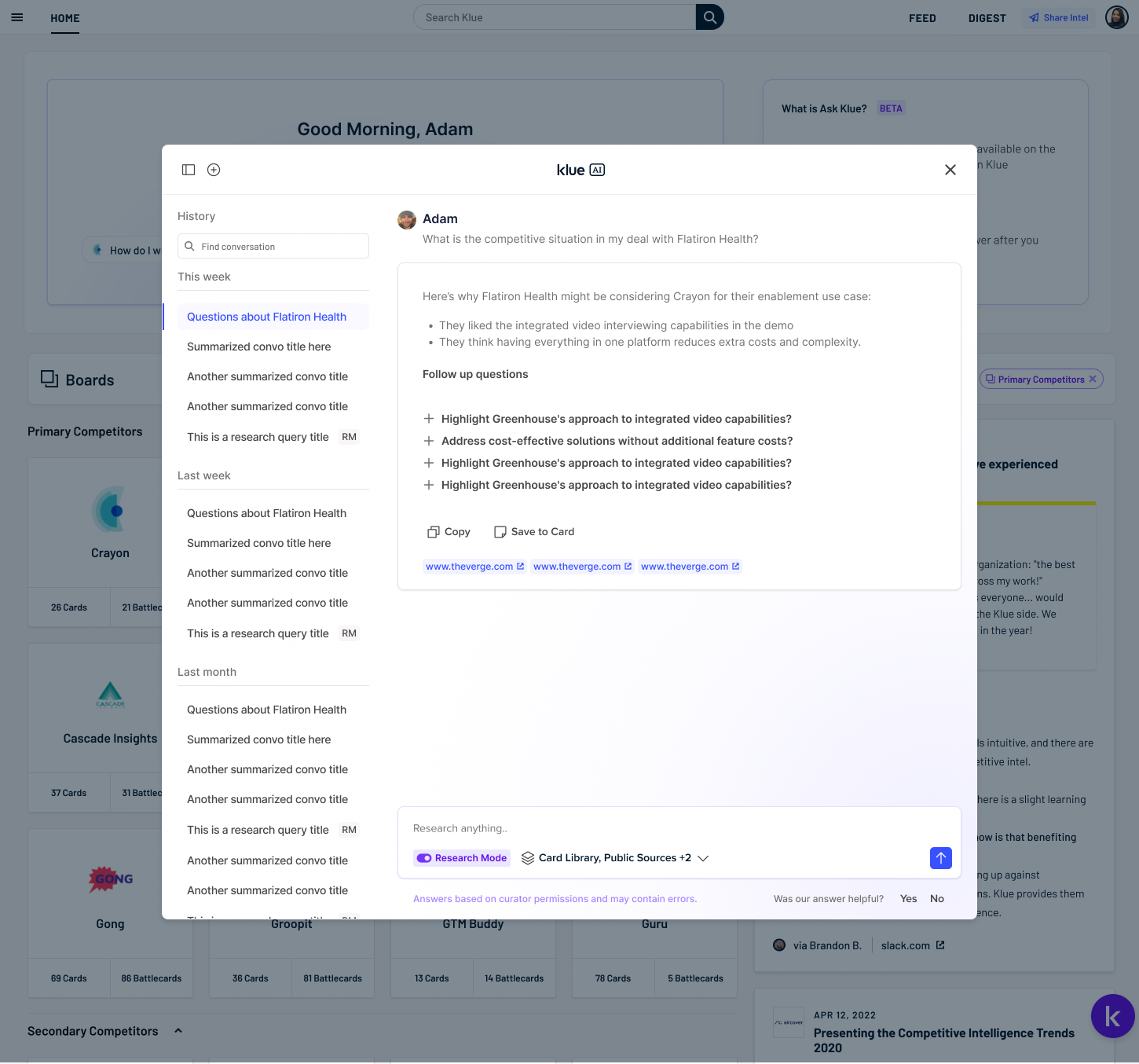
Reducing 0-results
By broadening sources beyond Klue and adding citations for transparency and trust, we reduced “0 results” queries from 48% down to ~25%, giving users a more reliable experience and encouraging deeper engagement.
Vision.
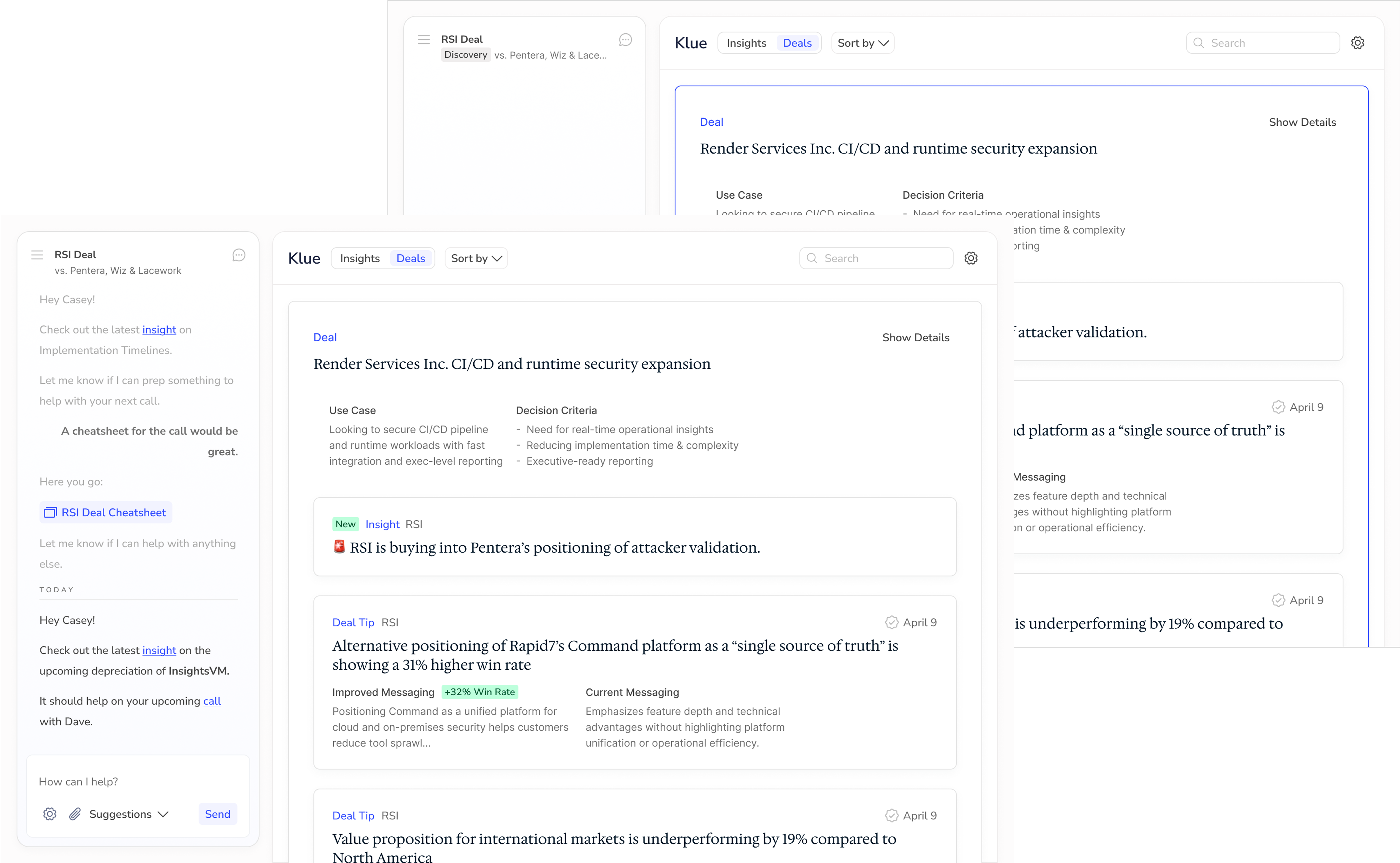
The evolution of Ask Klue laid the groundwork for Klue Agent, our long-term vision of an AI-powered assistant embedded across the platform.
Impact.
Results
After launch, Ask Klue quickly became a go-to tool for competitive questions.
60%
Reduction in “0 results” queries (from 48% → ~25%) after broadening sources
50%
Reduction in shallow queries. Company-name-only prompts dropped from 28% to 15% as users shifted toward deeper, multi-step questions.